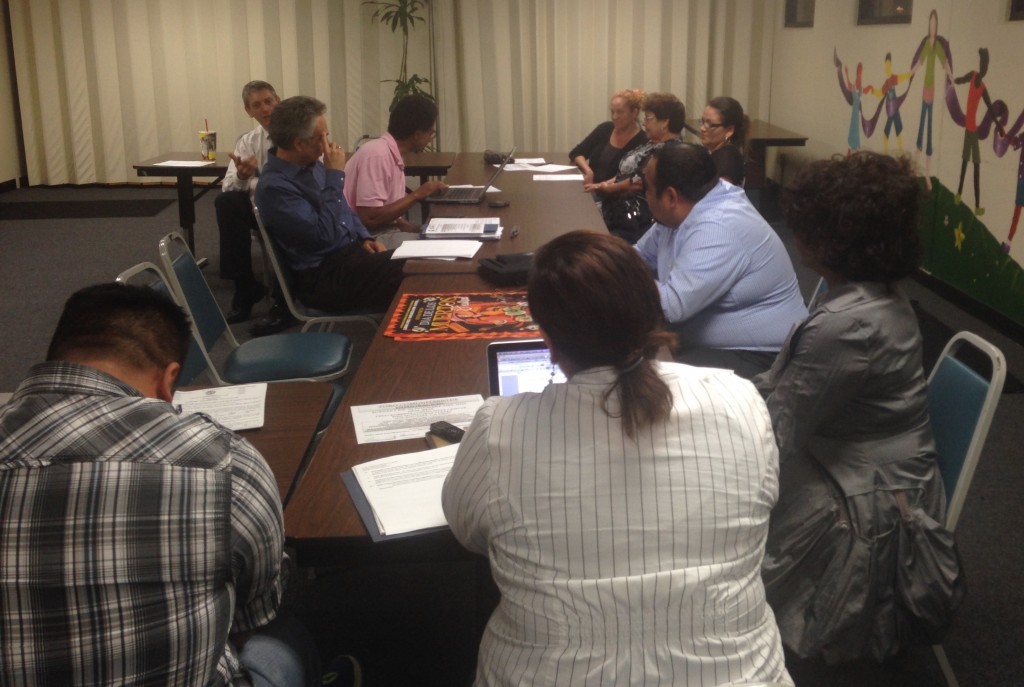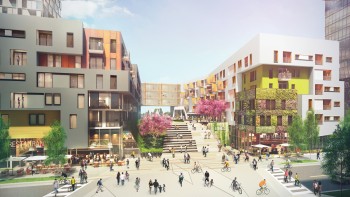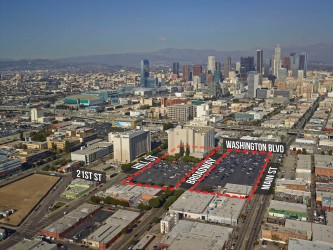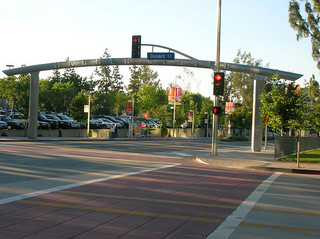A new South Los Angeles development project drew sharp criticism from neighbors and health advocacy groups at a press conference Monday. A report released by Human Impact Partners found that “The Reef” development, slated to build two multi-use high-rise buildings, will place over half of renters in the site’s surrounding area at high risk for financial strain or displacement.
In September, the City Council released a 3,000 page environmental report on the development. The document has been has been a source of strain on attempting to be involved in the development process.
“In the immediate, we are concerned about the draft [environmental impact review] project that has only given us 47 days to respond to a 3,000 page document,” said Benjamin Torres of CDTech.
Beyond the environmental impact report, the community is concerned that the development will bring new residents into the proposed luxury apartments while pushing out lower-income locals because of rising rent and property value.
Read More: Neighborhood council to take action on Reef Project report
Los Angeles is the least affordable city for renters, and HIP found that the city lost 65 percent of state and federal funding for affordable housing between 2009 and 2014.
The South Los Angeles neighborhood surrounding the development is one of the most crowded areas in the city. In the community where 45 percent of residents fall below the poverty line, a rise in prices leaves many residents forced to compromise.

Residents hold a press conference in front of The Reef, which plans to develop two new skyscrapers in South LA over the next 15 years. | Caitlyn Hynes, Intersections South L.A.
Community members are worried that The Reef development will not include affordable housing, an issue that already exists. At the press conference, residents and community leaders urged developers and the City Council to consider their voices throughout the 15-year building process.
Benjamin Torres of CDTech said he was concerned that the decisions made about the development would not include the input of the neighbors who currently live there.
“One [concern] is the long-term process and what the role of the community is, and making sure we have equitable community development that benefits the area,” he said.
Neighbors want South L.A. to attract developers. They also want development to reflect the neighborhood’s residents as they are now, not those who will move in to be a part of The Reef’s demographic.
“Let’s imagine for one minute what this project could be. Imagine if this was affordable housing for the residents of affordable housing for South Los Angeles,” said Jim Mangia, President and CEO of St. John’s Well Child and Family Center. “Imagine if that development was serving the people of this community, who have built this community with their blood and their sweat and their tears. Imagine if some of that retail space were community health centers that served this community.”
Read More: Some South LA residents express uncertainty with billion dollar development
Dr. Holly Avey of HIP said that her organization was concerned about the negative impact that this development could have on the historic South Central L.A. neighborhood. The report found that community residents who are impacted by displacement and financial issues are at a high risk of a variety of health problems, including anxiety, depression, obesity and diabetes.
Beatriz Solis of the California Endowment said that some families are forced to make delicate tradeoffs, like choosing between healthy food or preschool.
Cynthia Bryant, the owner of a local ice cream shop, voiced her concern that when the development does go forward, the businesses in The Reef will push her out of the neighborhood. Bryant worries that the business space in The Reef will drive up rent prices across the neighborhood.
“I don’t want to be the first one to get on the boat if we get pushed out of this community, because they’re pushing us further and further. But where is the boat loading? Should I be the first or should I be the last, should I keep hanging on?” said Bryant.
The rising rents and subsequent displacement of residents worries Solis as well.
“At the community level, when people are forced out, the whole community fabric begins to unravel, and what cohesion and collaborative efficacy, or social and political power did exist begins to evaporate, making it more and more difficult to have a voice in community development,” Solis said.
Neighbors like Erendira Morales, a working mother of four children, say they want to be a part of this process to make sure that their concerns are being heard and addressed.
“We feel that they are playing with the life and the future of the people who live in this community. Our local representatives are not listening to us,” said Morales. “We have our interests, we have our opinions and we feel that they are not paying attention to us. We want to participate, we want to be part of this process.”


















